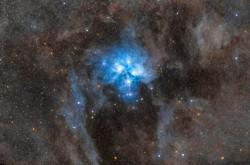Glossary term: 梅西耶天體
Description: 梅西耶天體是指查爾斯-梅西耶(Charles Messier)和皮埃爾-梅尚(Pierre Méchain)在1781年首次編成目錄的110個天體。梅西耶和梅尚當時正在尋找彗星,彗星看起來是模糊而延伸的,但他們發現的許多模糊而延伸的天體看起來卻沒有移動。他們對這些天體進行了記錄,以免再次觀測浪費觀測時間。這些太陽系外的模糊延伸天體被稱為 "星雲"。
現在的星表包含 55 個星團、39 個星系、11 個真正的星雲和 5 個星群。這些天體是業餘天文學家最喜歡的觀測目標。一個天文學家的垃圾就是另一個天文學家的寶藏。
梅西耶天體通常用它們的星表編號前綴字母 "M "來表示。因此螺旋星系Messier 101通常被稱為M101。
Related Terms:
See this term in other languages
Term and definition status: The original definition of this term in English have been approved by a research astronomer and a teacher The translation of this term and its definition is still awaiting approval
This is an automated transliteration of the simplified Chinese translation of this term
The OAE Multilingual Glossary is a project of the IAU Office of Astronomy for Education (OAE) in collaboration with the IAU Office of Astronomy Outreach (OAO). The terms and definitions were chosen, written and reviewed by a collective effort from the OAE, the OAE Centers and Nodes, the OAE National Astronomy Education Coordinators (NAECs) and other volunteers. You can find a full list of credits here. All glossary terms and their definitions are released under a Creative Commons CC BY-4.0 license and should be credited to "IAU OAE".
If you notice a factual or translation error in this glossary term or definition then please get in touch.
Related Media
M45昴星團與壯麗的塵埃
Credit: Mohamed Usama/IAU OAE
License: CC-BY-4.0 Creative Commons 姓名標示 4.0 國際 (CC BY 4.0) icons









